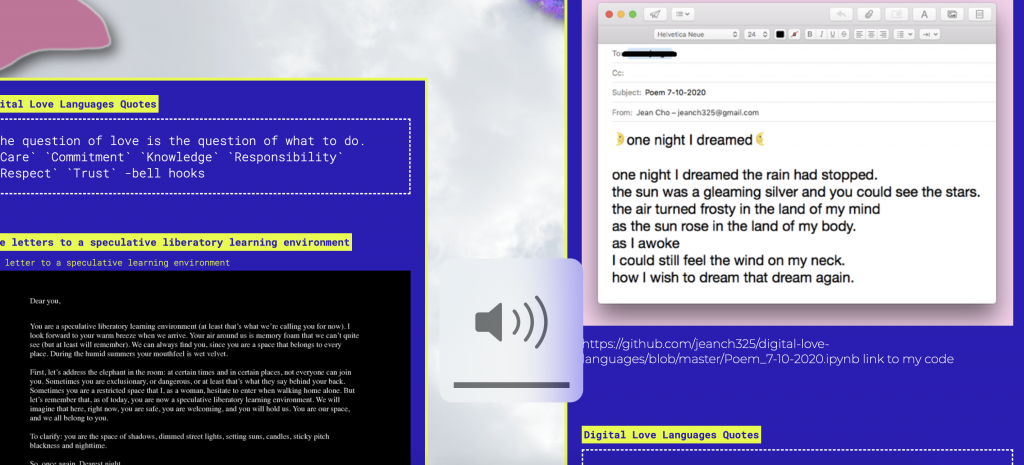m’s project 1/*m. tayao
atayao
lab section E
*/
function setup() {
createCanvas(500, 500);
background(0);
}
function draw() {
// BACKGROUND CHANGE
if (mouseX > width/2) {
background(145, 176, 255); // light blue bg
fill(208, 230, 112); // "O"
rect(width/2 - 50, height/2 - 200, 35, 55);
rect(width/2 - 40, height/2 - 190, 25, 45);
fill(145, 176, 255);
rect(width/2 - 40, height/2 - 190, 15, 35);
fill(208, 230, 112); // "H"
rect(width/2 - 5, height/2 - 200, 10, 55);
rect(width/2 + 25, height/2 - 200, 10, 55);
rect(width/2, height/2 - 175, 30, 10);
rect(width/2 + 45, height/2 - 200, 10, 40); // "!"
rect(width/2 + 45, height/2 - 155, 10, 10);
} else {
background(208, 230, 112);
}
// SELF-PORTRAIT
noStroke();
fill(64, 48, 27); // hair
ellipse(width/2 - 55, height/2 - 60, 75);
ellipse(width/2 + 25, height/2 - 50, 135);
rect(width/2 - 92.5, height/2 - 60, 184.75, 200);
fill(214, 161, 96); // head
ellipse(width/2, height/2 + 15, 150, 165);
fill(89, 55, 12); // eyebrows
ellipse(width/2 - 25, height/2 + 7, 25, 10);
ellipse(width/2 + 25, height/2 + 7, 25, 10);
fill(242, 236, 228); // whites of eyes
ellipse(width/2 - 30, height/2 + 35, 45, 30);
ellipse(width/2 + 30, height/2 + 35, 45, 30);
fill(125, 81, 0); // irises
ellipse(width/2 - 30, height/2 + 35, 20);
ellipse(width/2 + 30, height/2 + 35, 20);
fill(64, 44, 15); // pupils
circle(width/2 - 30, height/2 + 35, 10);
circle(width/2 + 30, height/2 + 35, 10);
fill(181, 129, 65); // nose
ellipse(width/2 - 5, height/2 + 70, 7);
ellipse(width/2 + 5, height/2 + 70, 7);
fill(237, 115, 90); // cheeks
ellipse(width/2 - 45, height/2 + 65, 40, 20);
ellipse(width/2 + 45, height/2 + 65, 40, 20);
fill(191, 69, 131); // mouth
ellipse(width/2, height/2 + 85, 20, 10);
fill(242, 236, 228); // teef
ellipse(width/2, height/2 + 82, 13, 5);
}
![[OLD SEMESTER] 15-104 • Introduction to Computing for Creative Practice](../../wp-content/uploads/2023/09/stop-banner.png)
